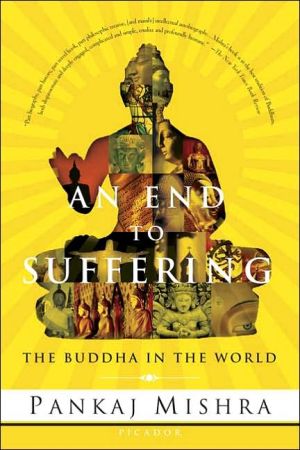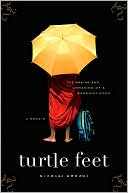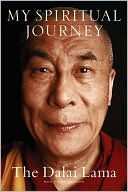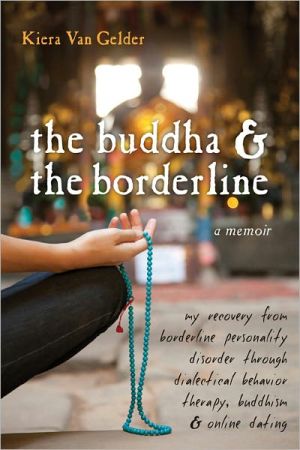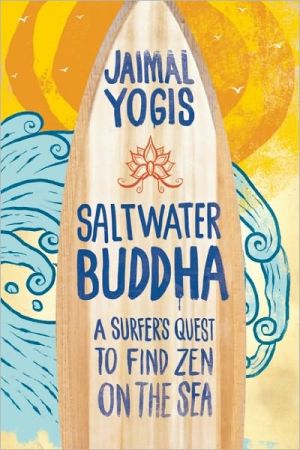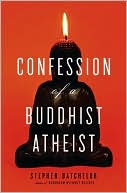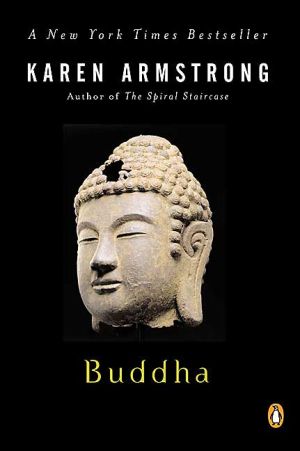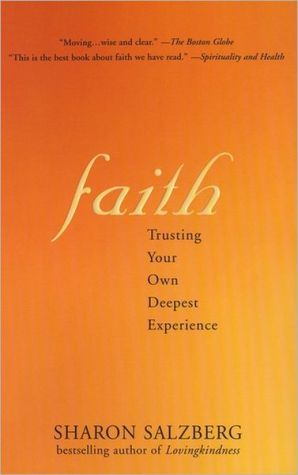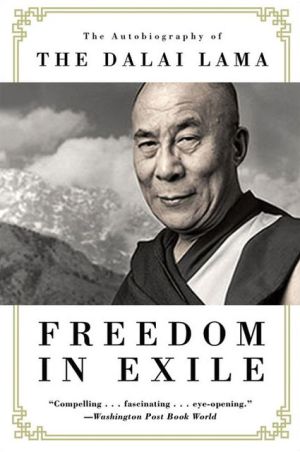End to Suffering: The Buddha in the World
An End to Suffering tells of Pankaj Mishra's search to understand the Buddha's relevance in today's world, where religious violence, poverty and terrorism prevail. As he travels among Islamists and the emerging Hindu Muslim class in India, Pakistan, and Afghanistan, Mishra explores the myths and places of the Buddha's life, the West's "discovery" of Buddhism, and the impact of Buddhist ideas on such modern politicians as Gandhi and Nelson Mandela. Mishra ultimately reaches an enlightenment of...
Search in google:
An End to Suffering tells of Pankaj Mishra's search to understand the Buddha's relevance in today's world, where religious violence, poverty and terrorism prevail. As he travels among Islamists and the emerging Hindu Muslim class in India, Pakistan, and Afghanistan, Mishra explores the myths and places of the Buddha's life, the West's "discovery" of Buddhism, and the impact of Buddhist ideas on such modern politicians as Gandhi and Nelson Mandela. Mishra ultimately reaches an enlightenment of his own by discovering the living meaning of the Buddha's teaching, in this "unusually discerning, beautifully written, and deeply affecting reflection on Buddhism" (Booklist). The New York Times - William Grimes Mr. Mishra presents these concepts simply and clearly. He also lends them dramatic immediacy, tying them closely to specific events and places in the Buddha's life, highlighting the arguments and counterarguments that they provoked at the time. At every turn, he draws parallels between the social problems of the Buddha's era and the myriad social and political torments of our own age. Mr. Mishra paints a vivid, painful picture of the developing world, bewildered by the disruptive forces of modernity.
AN END TO SUFFERING\ THE BUDDHA IN THE WORLD \ \ By PANKAJ MISHRA \ FARRAR, STRAUS AND GIROUX\ Copyright © 2004 Pankaj Mishra\ All right reserved.\ ISBN: 0-374-14836-8 \ \ \ \ Chapter One\ The Invention of 'Buddhism' \ * * *\ The days were shortening with intimations of winter when I returned from the inner Himalayas to Mashobra. When spring came, and the roads cleared, I began to travel to the Spiti and Pin valleys. There, in the lonely cold deserts, speckled wherever the snow melted into streams with green oases of pea and barley fields, and watched over by hilltop monasteries of sun-baked bricks, I saw many more images of the Buddha. I visited Tabo, and found the oldest monastery in the region still full of lamas, as jaunty in their maroon robes as the prayer flags fluttering from electric poles in the treeless expanses.\ I came to recognize the colourful murals and to understand somewhat the symbolism of the mystical circular diagrams (mandalas) on the wall hangings. I could spot from afar the distinctive shape of the gompas, or Buddhist monasteries; and although I felt excluded by the faith they expressed, about which I knew little then, I came to value them for their solitude and distance from the known world.\ I was intrigued, too, by the monks, their childlike simplicity, cheerfulness and serenity. I attributed these qualities to the plain and undemanding worldthe monks lived in, until I found out that some of them had travelled to, and spent time in, Europe and America. One of them had studied in a monastery near Lhasa for about twenty years; I was surprised to know that his subjects had been logic, epistemology, cosmology, psychology and ethics as expounded in Buddhist texts written in India as early as the second century AD.\ I began to write a travel essay, in which I tried to record my surprise at finding traces of Buddhism in these remote Himalayan valleys. I wrote about the other kind of Indian Buddhists I had met before: they were Dalits, low-caste Hindus, millions of whom had converted to Buddhism since the 1950s in an attempt to escape an oppressively caste-ridden Hinduism. I tried to describe how these politically active Buddhists, who did not appear to take much interest in spiritual matters, differed from the monks in the Himalayan monasteries.\ The small bookshop on the Mall in Simla was well stocked with books in English on Buddhism - in expectation, the owner told me, of the European and American tourists who came looking for writing on spiritual figures and themes, and often travelled from Simla to the hill town of Dharamshala, the home of the Dalai Lama and the Tibetan community in exile.\ One of the books I found there was an English translation of the Milindapanha (Questions of King Menander), which I had seen mentioned as a basic text of Buddhist philosophy in an essay by the Argentinian writer Jorge Luis Borges. King Menander was a Greek who reigned in north-west India, now Pakistan, in the first or second century BC. He is said to be among the rulers of the time who embraced, or was at least familiar with, Buddhism. The book, which was preserved in Ceylon for centuries, consists of Menander's conversations with an elderly Buddhist monk called Nagasena.\ Their dialogue on the individual self, which drew explicitly upon the Buddha's ideas, had particularly struck Borges. It begins with Menander asking Nagasena his name. Nagasena says that his name is 'only a generally understood term, a practical designation. There is no question of a permanent individual implied in the use of the word.'\ Menander replies, 'If there is no permanent individuality, who gives you monks your robes and food, lodging and medicines? And who makes use of them? Who lives a life of righteousness, meditation and reaches Nirvana? Who destroys living beings, steals, fornicates, tells lies, or drinks spirits? ... If your fellow monks call you Nagasena, what then is Nagasena? Would you say that your hair is Nagasena? Or your nails, teeth, skin, or other parts of your body, or the outward form, or sensation, or perception, or the psychic constructions, or consciousness? Are any of these Nagasena? Are all these taken together Nagasena? Or, anything other than they?'\ Nagasena answers no to all of Menander's questions.\ Menander says, 'Then for all my asking I find no Nagasena. Nagasena is a mere sound! Surely what your reverence has said is false!'\ Nagasena now takes over the questioning. He asks Menander, 'Your Majesty, how did you come here - on foot, or in a vehicle?'\ Menander replies, 'In a chariot.'\ 'Then tell me,' Nagasena asks, 'what is the chariot? Is the pole the chariot?'\ 'No, your reverence,' Menander replies.\ 'Or the axles, wheels, frame, reins, yoke, spokes, or goad?'\ Menander replies that none of these things is the chariot.\ 'Then all these separate parts taken together are the chariot?'\ Menander again says no.\ 'Then is the chariot something other than the separate parts?'\ 'No, your reverence,' Menander says.\ 'Then for all my asking, your Majesty,' Nagasena says, 'I can find no chariot. The chariot is a mere sound. What then is the chariot? Surely what your Majesty has said is false! There is no chariot!'\ Menander protests that what he had said was not false. 'It is on account of all these various components, the pole, axle, wheels and so on, that the vehicle is called a chariot. It's just a generally understood term, a practical designation.'\ 'Well said, your Majesty!' Nagasena replies. 'You know what the word chariot means! And it's just the same with me. It's on account of the various components of my being that I am known by the generally understood term, the practical designation, Nagasena.'\ There were many such clear and simple exchanges in the book, illustrating the Buddhist view of individual identity as a construct, a composite of matter, form, perceptions, ideas, instincts and consciousness, but without an unchanging unity or integrity.\ 'I think, therefore I am,' Descartes had said; and when I first came across these famous words as an undergraduate they expressed all that then seemed holy to me: individuality, the life of the mind. It was comforting to believe that the human mind was capable of acting rationally, logically and freely upon the inert outside world. I was attracted, too, by the idea of the authentic self, which I had picked up from the French existentialist philosophers, who for some reason were very popular in India. These descriptions of the self - as a discrete entity shaped through rational thought and act - helped offset the uncertainties (financial, emotional, sexual) that I lived with then.\ But the dialogue between the Greek king and the Buddhist monk seemed to refute intellectually the Cartesian I', by implying that one cannot speak of a separate self or mind thinking 'I think' inside the body, inasmuch as this self is nothing but a series of thoughts. It suggested that the 'I' was not a stable and autonomous entity and indeed was no more than a convenient label for the provisional relations among its constantly changing physical and mental parts. It also matched better my experience: of finding incoherence where there was supposed to be a self, of being led on by stray thoughts, memories and moods, and thinking that nothing existed beyond that flux.\ I read other books. I learned quickly that although Buddhism often had the trappings of a formal religion - rituals and superstitions - in the countries where it existed, it was unlike other religions in that it was primarily a rigorous therapy and cure for duhkha, the Sanskrit term denoting pain, frustration and sorrow. The Buddha, which means 'the enlightened one', was not God, or His emissary on earth, but the individual who had managed to liberate himself from ordinary human suffering, and then, out of compassion, had shared his insights with others. He had placed no value on prayer or belief in a deity; he had not spoken of creation, original sin or the last judgement.\ He had spoken instead of a suffering that was manmade and thus eradicable. He had confined himself to human beings living everyday lives with desire, attachment, pride, jealousy and hatred. He had analysed the workings of these emotions and asserted that they arise from a craving for and an attachment to a self that has no true existence. He had developed analytic and contemplative techniques which helped prove that neither the self nor the phenomenal world are solid, stable and discrete entities, and which attuned the human mind to 'things as they really are': interconnected and in a state of change.\ The Buddha was, broadly speaking, an empiricist who denied that there are any fixed substances underlying appearances; this is true as much for what one feels to be one's inner self or ego as for the outer world. He claimed that experience, rather than speculative metaphysics, holds the key to wisdom. He assumed that the quality of all human experience depends on the mind and so had been concerned with analysing and transforming the individual mind. To see that one was neither identical with one's thoughts as they arose continuously and discursively in one's mind, generating desire, anxiety, fear and guilt, nor indeed limited by them, was to be aware of the possibility of controlling them and of moving towards a new kind of spiritual and intellectual freedom.\ Clearly, the Buddha had been more of a trenchant thinker and psychologist than a religious figure. He, and later interpreters of his ideas, had investigated in detail the contents of human consciousness; they had located in it a quality of will which when strengthened through meditation can become an effective barrier against craving and suffering.\ But, reading the often very abstract and difficult Buddhist treatises on the mind, I often wondered why the Buddha, ostensibly the founder of a religion, had concerned himself with this kind of close and dry analysis of the inner world of experience; why had he not extended his analysis to the external world, tried to establish clear, distinct and certain foundations for knowledge, and founded, like Descartes, a tradition of scientific enquiry? Certainly Buddhism with its rational outlook was immune to the kind of conflict between religion and science that defined modern western philosophy.\ It seemed that the Buddha had had other priorities and that he had been concerned almost exclusively with the inescapable fact of suffering. But here, too, he seemed to differ radically from the intellectual fathers of the modern world, Rousseau, Hobbes and Marx. For he had presumed to offer a cure for human suffering that did not involve large-scale restructuring of state and society.\ Mr Sharma, whom I told about my growing interest in the Buddha, couldn't say much about this. He had taken to dropping in more often than before, and he appeared to have loosened up a bit. He told me more about his life. He had grown up in a village near Simla, among apple and pear orchards. He had spent no time at all on the plains; he spoke with something like pride of how his few visits there had proved to be ordeals. When he spoke of the Himalayas as a place of exile and refuge, when he told me about the nearby regions which the Pandava brothers in the Mahabharata had visited thousands of years ago, he seemed to be speaking not so much of the myths of the race - the idea of the Indian plains with their relentless heat and dust as a trap - as of his own life.\ He had never married; family life with its obligations was, he said, not for him. But he seemed not altogether at ease in his self-imposed solitude. I wondered if he sometimes resented it, and wished, like everyone else, that he could have had another, more active and fruitful life, far away from the small place where he had spent, and was now to end, his life.\ He seemed a bit puzzled by my interest in the Buddha. He said that Dalits, low-caste Hindus, who had converted to Buddhism thinking it to be something opposed to Hinduism, had dragged the Buddha's name through mud. For the Buddha was actually the tenth incarnation of the Hindu God Vishnu, and had emerged from the mouth of Brahma, and therefore was part of rather than opposed to the Hindu tradition.\ I told him that this was more myth than history. The Buddha may have emerged metaphorically from the mouth of Brahma, but the evidence collected by British scholars in the nineteenth century had proved that he had also been a flesh-and-blood being, a figure no less historical than Jesus and the Prophet Mohammed, and, furthermore, that he had lived and died not far from where we were. I also told Mr Sharma that I had been to the Buddha's birthplace in Nepal and seen the iron pillar erected there by Ashoka, the third-century BC Indian emperor.\ * * *\ The Buddha's birthplace is called Lumbini, and is just north of the vast Indian plain across which the great rivers of the subcontinent, the Ganges and the Yamuna, flow. The legends of the Buddha speak of it being close to the Himalayan foothills. This gives the place romance: tall mountains and waterfalls and pine forests as the backdrop to the Buddha's luxurious childhood.\ But when you finally get there - after a long, arduous journey within either India or Nepal - the high mountains to the north are no more than a rumour; at best, an added chill in the winter breezes, and a faint swelling on the horizon on clear spring days. The feeling of being exposed in the vast flat land never leaves you, especially in the summer when, after weeks of blistering heat, whirlwinds of fine dust and dry leaves scatter across the exhausted rice fields and the huddled villages of mud and straw.\ Occasionally, there are clusters of mango and tamarind trees and ponds: oases of shade and cool, where the physical world regains form and colour. The land that looks so parched grows quickly green after the first rains of the monsoons in late June or early July. Two months of monsoons impose an unruly lushness upon it. But the endless rain wearies; the prickly heat saps energy; and the rivers and streams often burst their banks, turning the earth into obdurate mud. It is only during the months from October to March that the weather stops being punitive. All day long a mellow light falls gently over the busy fields and the villages from a tenderly blue sky. The evenings are short, and the nights often chilly.\ In 1985, when I visited Lumbini, I was sixteen years old. I had just left home for the first time and was living as a student in Allahabad, one of the emerging urban centres of the Buddha's time and now a decaying old provincial city in the Gangetic plain. I travelled cheaply and very slowly, on trains pulled by steam engines and country buses and, once, on a ferry over a dangerously swollen muddy river, passing through the places that the Buddha as a young scion called Siddhartha had dreamed of visiting.\ \ Continues...\ \ \ \ Excerpted from AN END TO SUFFERING by PANKAJ MISHRA Copyright © 2004 by Pankaj Mishra. Excerpted by permission.\ All rights reserved. No part of this excerpt may be reproduced or reprinted without permission in writing from the publisher.\ Excerpts are provided by Dial-A-Book Inc. solely for the personal use of visitors to this web site. \ \
Prompted by his own spiritual restlessness to discover the relevance of Buddhism in the contemporary world, Indian novelist Pankaj Mishra sets out on a journey to visit events and places in the life of the historical Buddha. Mishra digresses in a most entertaining and charming way into deeply personal and philosophical realms, but his detours always lead back to the central issue of human suffering in Buddhist thought. Lyrical and discursive, this book makes a perfect, if unorthodox, introduction to a complex subject.
\ From the Publisher"Part biography, part history, part travel book, part philosophic treatise, [and mainly] intellectual autobiography, [by someone who] 'couldn't sit still' long enough to meditate successfully . . . Mishra's book is in the best tradition of Buddhism, both dispassionate and deeply engaged, complicated and simple, erudite and profoundly humane."—The New York Times Book Review"Succinct, lucid, and coherent."—Los Angeles Times "[A] journey of self-discovery . . . [Mishra] struggles to reconcile lessons of the Buddha's life with his own shrinking world."—The New Yorker\ "The only sane response to the post-9/11 world."—Elle\ \ \ \ \ \ William GrimesMr. Mishra presents these concepts simply and clearly. He also lends them dramatic immediacy, tying them closely to specific events and places in the Buddha's life, highlighting the arguments and counterarguments that they provoked at the time. At every turn, he draws parallels between the social problems of the Buddha's era and the myriad social and political torments of our own age. Mr. Mishra paints a vivid, painful picture of the developing world, bewildered by the disruptive forces of modernity.\ — The New York Times\ \ \ Publishers WeeklyMishra (The Romantics) offers an ambitious "book-length essay" that combines an overview of the life, times and teachings of the Buddha with personal anecdotes and extended multidisciplinary forays into realms such as ancient and modern history, philosophy, politics and literary criticism. If Mishra's approach is broad, it is also deep and often effective. For example, his close reading of early Indian scriptures and his historical-political examination of the Buddha's society bring to life a "half-mythical antiquity" that, in turn, helps the reader see the Buddha's teachings afresh: not as generic spiritual truisms but rather as specific responses to particular religious and social conditions. Yet the book fails to anchor its broad perspective in a strong central thesis. While it follows the chronology of the Buddha's life, Mishra intersperses whole chapters exploring topics such as "The Death of God" and "Empires and Nations." These discussions of Nietzsche's opinions of the Buddha or Zen Buddhism's endorsement of Japanese imperialism are themselves compelling, but feel disjointed. Mishra also frequently shifts the focus to his own life; sometimes this artfully illustrates a point, but at other times it borders on the self-indulgent. Nevertheless, for serious readers the book is a rich and challenging-if sometimes meandering-invitation to explore the Buddha's legacy across centuries, continents and cultures. (Dec.) Copyright 2004 Reed Business Information.\ \ \ \ \ Library JournalIn this extremely well-written, almost crystalline narrative, Mishra (The Romantics) escorts the reader on a journey from the small-town Hindu culture of his birth to his tawdry university experience, contemplative life in India's rural north, and finally his life in Europe and America. The larger part of this treasure, though, consists of Mishra's account of the mythical and historical lives of the Buddha and Indian Buddhist culture. The carefully interwoven account results in thoughtful and lucid juxtapositions of contemporary India, including a possibly more glorious Buddhist past, contrasted with the modern West. Highly recommended for public and academic collections to join Karen Armstrong's Buddha and works by Thich Nhat Hanh.-James R. Kuhlman, Univ. of North Carolina at Asheville Lib. Copyright 2005 Reed Business Information.\ \ \ \ \ Kirkus ReviewsThe life of the historical Buddha, his legacy, and his enduring relevance. Indian-born novelist Mishra (The Romantics, 2000) begins in a secluded Himalayan valley with little more than an impulse: he wants to write about Siddartha Gautama (ca. 563-483 b.c.e.) but needs to know more. The quest evolves into a personal pilgrimage. The twist: actually visiting the Buddha's birthplace in Nepal, or trekking to other long-forgotten and ignored sacred sites in his native northern India, turns out to be not all that evocative of the pampered princeling who renounced material comforts to seek enlightenment. More resonant, the author finds, is his cumulative impact on Western thinkers in the modern era. Neatly subsumed into the Hindu pantheon eons ago by India's threatened Brahmins, edged out of ancient China by the great wave of Confucian ideas, the Buddha bobs up again with Nietzsche, Hermann Hesse, et al., in a world facing the great conflagrations of the 20th century. Suffering, after all, was his bag-as Allen Ginsberg surely must have put it-but it's still been an impressive revival, Mishra proposes, for someone who apparently wrote nothing down and may not even have been literate, about whom far less is known for certain than either the historical Jesus or Mohammed. Writing flatly and unemotionally, more as an intellectual admirer than a disciple, the author does manage to gather up and fit together a lot of Buddhist lore and codified principles, including a range of variations in worship among directly surviving enclaves from Tibet to Southeast Asia. The Enlightened One's supposed last words alone, rendered somewhat inelegantly here as "all conditioned things are subject to decay, strive onuntiringly," probably contain enough mystery to keep scholars and disciples delving for centuries more. An impressive compendium with a sense of shared discovery.\ \
